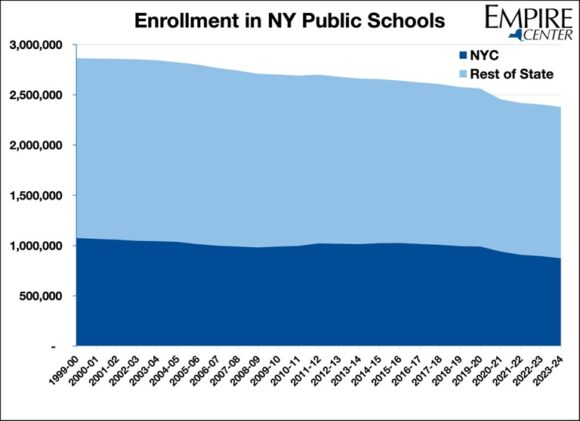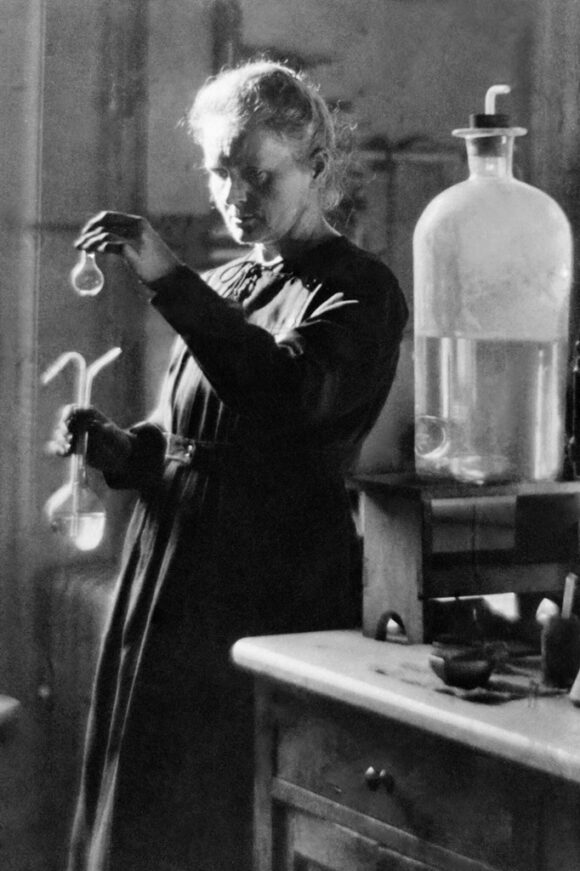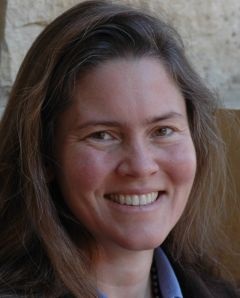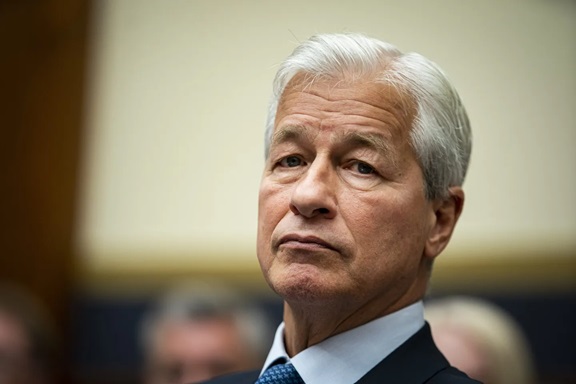Dear Commons Community,
The University of Florida President, Ben Sasse, was among the best paid university presidents ever. He promised a conservative overhaul, but then he resigned, leaving controversy.
Ben Sasse, the Nebraska senator, arrived in Florida in February 2023 to help cement a conservative makeover of one of the nation’s top five public universities. As reported yesterday by The New York Times.
The University of Florida had lured the senator with an unusual $10 million, five-year contract, possibly the most lucrative ever for a public university president. Gov. Ron DeSantis applauded the selection of a fellow Republican, calling Dr. Sasse a “deep thinker on education policy.”
Then, in July, just 17 months into his contract at the Gainesville university, Dr. Sasse resigned, sparking a host of questions about what went wrong.
Dr. Sasse cited his wife’s deteriorating health as the reason for his departure. But observers of the university knew there were a number of other possible factors.
The former senator had never quite won over many professors or students. After he announced his resignation, there were revelations about questionable hiring practices and spending.
There were also signs that Dr. Sasse faced another problem that has haunted college leaders everywhere: the school’s U.S. News & World Report rankings.
Before Dr. Sasse took over the school, the University of Florida had been proudly ranked among the country’s top five public universities. Just months into Dr. Sasse’s tenure, though, the school fell to No. 6, prompting the removal of the No. 5 banners that had hung from lampposts throughout campus.
Dr. Sasse didn’t have much respect for the U.S. News & World Report rankings, but the university’s politically connected board of trustees very much did.
The rankings are often criticized by university leaders as unfair and deeply flawed, yet they remain a preoccupation at many campuses as administrators struggle to navigate an increasingly competitive environment for higher education.
Perhaps few places have been more obsessive followers of the rankings than Florida, where a state law encourages public universities to aim for high rankings.
“The powers that be in the state of Florida wanted every aspect of U.F. to be a top-ranked school,” said Mike Spivey, the founder of Spivey Consulting, which was hired to help the University of Florida’s law school climb the rankings.
Moving upward on U.S. News lists has been part of the university’s strategic planning since at least 2017. Over the years, according to records and interviews, the university had pored over spreadsheets in minute detail, inflated faculty head count, ordered what professors believed was unnecessary equipment and spent millions luring higher-scoring students — all for rankings.
Yet when the latest U.S. News rankings were released in September, Florida had fallen once again, to No. 7.
Whether Dr. Sasse’s indifference to the rankings led to his resignation is unclear, but the chasm between the president and the board of trustees seemed to develop as the university’s rankings status became more tenuous. Some on campus are convinced it explains his departure from the presidency.
“The board saw us dropping in the rankings and said, We’ve got to stabilize the ship,” said Danaya Wright, a law professor who served until May as the faculty representative on the board.
An Obsession With Rankings
Since 2019, Governor DeSantis has led a conservative transformation of education in Florida. The University of Florida, the state’s premier institution, was not immune from the pressures. The DeSantis administration eliminated diversity programs, sought to weaken tenure protections and developed a center at the university to study Western civilization.
But another forceful leader was also bent on reshaping the school for very different reasons, and perhaps with much more profound results.
Mori Hosseini, a large residential builder in the state and a major DeSantis benefactor, has been the chairman of the University of Florida’s board of trustees since 2018. It pained him, he wrote in a newspaper essay, that his oldest daughter had selected the University of Michigan for college because she thought no Florida school was good enough.
Mr. Hosseini set out to change that, mainly by pushing the university ever upward in the U.S. News rankings. In 2021, the school achieved the status of a top five public university. Mr. Hosseini believed Dr. Sasse could take Florida even further. (Michigan is now No. 3 among public universities, behind only the University of California’s Los Angeles and Berkeley campuses.)
“We needed someone to take this university to the next level,” Mr. Hosseini said in a meeting last year, breaking into tears, according to a public recording of the meeting, which was held nearly a year after Dr. Sasse joined the university. “And I think we have that person here,” he added, referring to Dr. Sasse.
Neither Mr. Hosseini nor Dr. Sasse responded to requests for comment for this article from The New York Times.
The board’s choice of Dr. Sasse worried some on campus who believed it signaled a new era of conservative interference. The governor was not directly involved, though his appointees permeated the state’s education leadership structure.
He did have academic bona fides: a Ph.D. from Yale and experience in university administration, running the tiny Midland University in Nebraska.
There, he had gained a reputation as a turnaround artist by saving the school from the brink of extinction. But Midland, with only 1,600 students, was nothing like Florida, with 16 academic colleges, a major hospital, more than 50,000 students, more than 6,000 professors, and an annual budget of nearly $10 billion.
That lack of large university experience did not appear to be a concern. Another problem soon came up, however: Dr. Sasse questioned the university’s unrelenting pursuit of higher placement on the U.S. News lists.
Conflicting Visions
Susan Hegeman, an English professor, said the message from Dr. Sasse was clear. “While Mori Hosseini has been laser-focused on the national rankings, Sasse seemed to be uninterested,” she said.
At a meeting of the university’s faculty senate in August 2023, just before new rankings were due out, Dr. Sasse posed a question: “What is the North Star of things we organize around?”
He suggested that it should not be U.S. News. “I don’t think we should outsource our judgments about the most important things to whatever a given rating agency happens to measure,” he said, according to a publicly available recording of the meeting.
Emphasizing the ephemeral nature of the rankings, Dr. Sasse added, “U.S. News & World Report could go bankrupt or they could change their algorithms.”
It is a common perspective among university leaders. U.S. News uses a proprietary formula that incorporates a host of metrics to sort all manner of higher education institutions and programs. The formulas include graduation rates but also other things, like surveys about a school’s reputation. In recent years, the company jettisoned metrics like class sizes and giving by alumni and added others, such as how first-generation students fare.
U.S. News has said it is a service to students, and advises them to consider the rankings alongside other information.
Daniel Diermeier, the chancellor of Vanderbilt University, commissioned a study — after his own school’s decline last year — that argued the rankings were problematic.
“The fact that anybody would use deeply flawed and misleading rankings as part of their strategic plan for a university is appalling,” Dr. Diermeier said in an interview.
Indeed, when the rankings came out a month after Dr. Sasse made the comments, in September 2023, Florida dropped a slot.
Dr. Sasse may have been a skeptic, but the board that employed him was heavily focused on analyzing the company’s new method for scoring universities. In a March trustee meeting, an hour was spent discussing rankings.
Raymond Sass, Dr. Sasse’s former Senate chief of staff, had been hired as the university’s vice president for strategy and innovation. During the March meeting, he gave a slide show presentation showing an array of more than 40 bubbles representing the new initiatives the university would use to regain its spot under U.S. News’s new algorithm.
The proposals included a “faculty research moonshot,” an award designed to encourage excellent research and attract top talent. Under the idea, professors would be paid bonuses for excellence, “e.g., $1 million for a Nobel Prize,” Mr. Sass’s presentation said.
Next, the conversation turned to problems at the law school.
A Law School in Decline
Nowhere has the university’s quest for higher rankings been more obvious than at its Levin College of Law, which had risen to No. 21 on the U.S. News law school rankings from No. 48 in less than 10 years.
But the law school also faced trouble. Its ranking had dropped to No. 22 in 2023 from No. 21.
For years, the former law school dean, Laura Rosenbury, had worked to lift the school’s standing. Among other tactics, the school used tuition discounts to lure students with higher LSAT scores, a factor in the rankings.
LSAT scores jumped, but Paul Campos, a University of Colorado law professor who analyzed the school’s strategy, found that “massive tuition discounts” resulted in an inflation-adjusted tuition revenue decline to $8 million a year from $36 million a year in seven or eight years.
“All of this was driven by a kind of obsessive attempt to jack up the school’s rankings,” Mr. Campos said.
Michelle Jacobs, a former Florida law professor, said that even purchases for equipment and furnishings were used to increase the rankings, by increasing expenditures per student.
“One summer when we returned to school, every single chair from every single classroom had been put in the dumpster,” she said. “They were perfectly good chairs.”
Ms. Jacobs said that the law school had also artificially inflated its faculty by counting guest speakers among them. Pointing to faculty numbers submitted to the accrediting organization, the Council of the ABA Section of Legal Education and Admissions to the Bar, Mr. Campos agreed, saying that the school had “clearly gamed the faculty total in a way that’s not defensible. This is just an egregious abuse of the rules.”
The faculty head count climbed, practically overnight, to 343 in 2022 from 250 in 2021.
In a statement, Ms. Rosenbury, who left Florida in 2023 to become president of Barnard College, said the school’s efforts were part of an intentional plan funded by the university, the state and donors.
“With this public-private partnership,” she said in the statement, “students benefited from increased support services, better facilities and new programs.”
Ms. Rosenbury defended counting guest speakers as part-time faculty, saying it fell within A.B.A. standards because they were “practicing lawyers, judges and colloquium speakers” whose participation was integral to courses. (The 2022 instructions for reporting the number of faculty members said that part-time faculty members should teach a course.)
As for chair purchases, she said in the statement, they were part of “much-needed improvements” to facilities.
Even as its rankings had increased, the law school’s bar passage rates had lagged behind some other schools in the state. And U.S. News was poised to change its algorithm again, to give more weight to bar passage and other “outcomes.”
Mr. Hosseini, the board chairman, was upset about the passage rates for the bar exam. He threatened the law school with a loss of funding.
“So this is deadly serious,” Mr. Hosseini said during the March meeting. “It’s not good for the college, it’s not good for the faculty, it’s not good for the students. University of Florida, as far as I’m concerned, 100 percent pass the test.”
In May, the law school’s rank dropped again, to No. 28.
A Parting of Ways
Mr. Hosseini’s push for radical improvement also extended to a public school run by the university. At a board meeting last year, the school’s director announced that U.S. News had ranked its high school 38th out of 1,130 Florida schools.
Rather than applaud, Mr. Hosseini derided the accomplishment. “For this board, it’s very difficult to be No. 38 in this state. It really is,” Mr. Hosseini said. “It’s very difficult for us to accept, you know, we’re not top five. So I asked the president to look into this.”
The school was designed to develop best practices in teaching, then share the results across the state. The student body was diverse by design, selected from the Gainesville area by a lottery.
To address Mr. Hosseini’s concerns, Penny Schwinn, one of the university’s vice presidents, proposed that the high school move to a selective admissions process, a move that would likely change the racial and economic demographics of the school dramatically.
“We need to be in the top 10, period,” said Dr. Schwinn, who had been hired by Dr. Sasse. “No question.”
Local leaders protested, including the Gainesville City Commission, which passed a resolution condemning the plan to change the admissions process. A petition attacking the idea drew more than 800 signatures.
At a meeting in June, Dr. Sasse seemed to back away from the plan, saying no changes would be made until further notice and an external analysis had been completed. By that time, the high school’s ranking had dropped to 64th.
The next month, Dr. Sasse announced his resignation. His wife’s health, a problem since a stroke in 2007, was deteriorating further, he said.
After his resignation, student journalists combed through spending by Dr. Sasse on highly paid new hires, including former Capitol Hill aides who lacked experience in large university administration, some of whom commuted from Washington at the university’s expense. Governor DeSantis promised an audit of the university’s finances.
Dr. Sasse, who remains a University of Florida professor with a $1 million salary, roughly three times as much as what the director of his program earns, posted a statement on X denying that his spending for new staff members or consultants was inappropriate, saying it was aimed at efforts to transform public higher education.
“I welcome both a debate about the merits of these reform initiatives and an audit of U.F.’s expenses,” he wrote.
The board quickly brought back the old provost and the former president, Kent Fuchs, who was credited with leading the university to the top five. The university dismissed most of the employees Dr. Sasse had brought in, including Dr. Schwinn.
“They are clearly bringing back the old team,” said Dr. Wright, the former faculty representative on the board. The goal, she believes, “is be No. 5 and be happy.”
Amid the tumult, some good news emerged. Florida’s bar passage rate increased — to more than 90 percent, a 10-percentage point increase over 2023’s. Mr. Hosseini personally donated $1 million to the law school as a reward.
Tony











